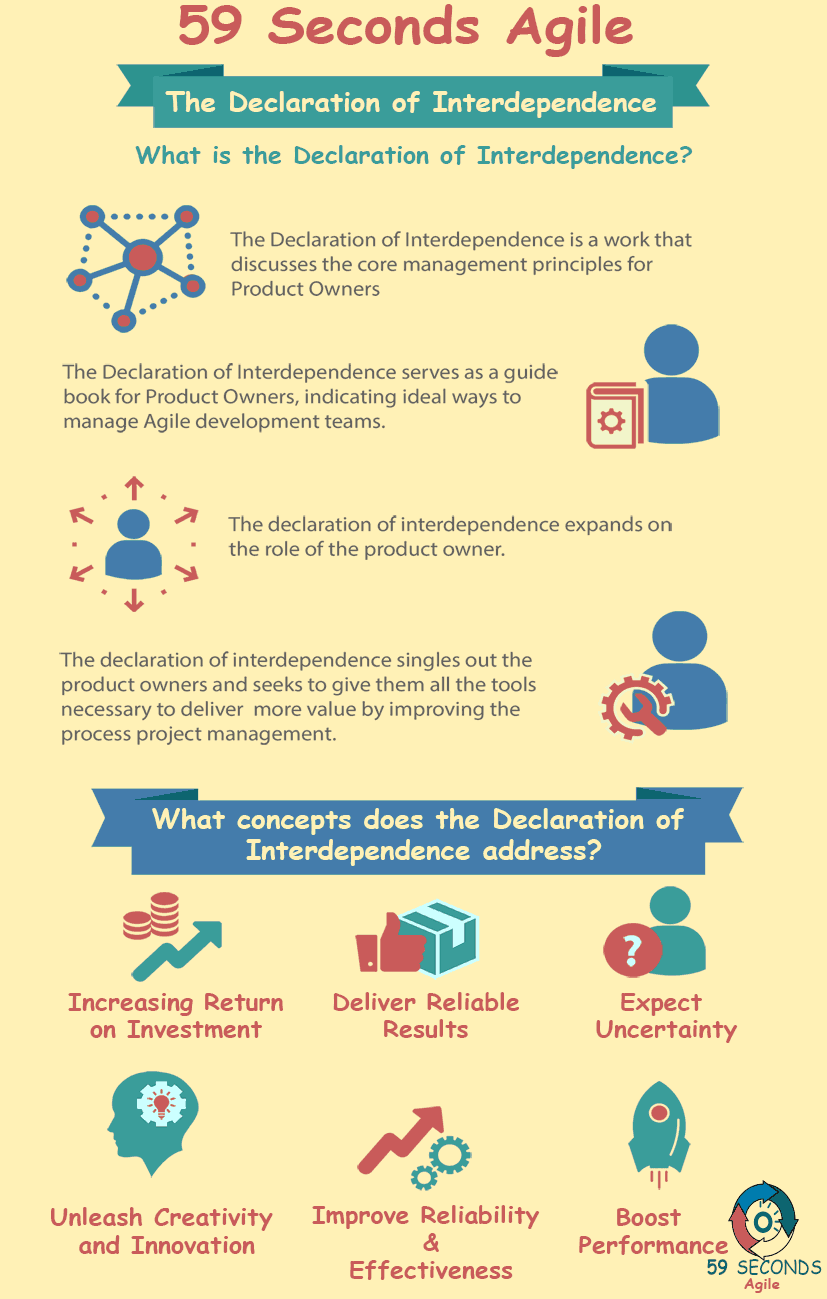The Agile Declaration of Interdependence
A 59 Seconds Agile Training Video
Continue to Part 13 Below
An Introduction to The Agile Declaration of Interdependence
A 59 Seconds Agile Article
This article provides an ‘Introduction to The Agile Declaration of Interdependence’ and looks to discuss the Key points within the Agile document.
The Declaration of Interdependence
Instead of trying to force teams into a waterfall structure, what if you adopted agile project management and the Declaration of Interdependence? Minimize your inefficient processes to maximize your return on investment. In order to do this successfully, you can follow the statements of the Declaration. Remember, there are six:
- We increase return on investment by making continuous flow of value our focus.
This supports the fundamental concept in agile of continuously delivering value to the clients.
- We deliver reliable results by engaging customers in frequent interactions and shared ownership.
This ensures that the customers’ visions of the product are taken into account in the development process.
- We expect uncertainty and manage for it through iterations, anticipation, and adaptation.
Developing a product never comes without risk, and planning for the risk ahead of time helps reduce the impact it will have in the long run.
- We unleash creativity and innovation by recognizing that individuals are the ultimate source of value, and creating an environment where they can make a difference.
When developers are allowed to take the reins on their own projects, they can come up with better and faster solutions to the problems and questions presented to them.
- We boost performance through group accountability for results and shared responsibility for team effectiveness.
This ensures that the entire team feels that they have ownership of the project.
- We improve effectiveness and reliability through situationally specific strategies, processes and practices.
Allowing each person on the team to do what they’re best at and letting the product owner manage the big picture will make your project as efficient and valuable as it can be. Rethinking how your teams are managed will encourage everyone involved in the product development to take ownership of the products and do their best possible work.
Continue Reading —> Next
The Agile Declaration of Interdependence
A 59 Seconds Agile Video Animation
Continue Reading —> Next
User Stories Applied
A 59 Seconds Agile Book Review
User Stories Applied by Mike Cohn is one of our favourite books on Agile User Stories. The book starts with an overview into user stories, and details what a user story is and the different aspects of them. He then discusses how to go about writing a user story, and provides details of the INVEST criteria that can be used to determine if the story is meeting all of its objectives. Next Mike gives an in depth discussion of who user stories are written for and where to begin when gathering the details for them. The book then discusses acceptance testing user stories, including how to go about specifying these criteria and the responsibilities of the development team and customers during this process.
Continue Reading —> Next
The Declaration of Interdependence
A 59 Seconds Agile Infographic

Continue Reading —> Next
Agile Scrum Master Training Course
Our Favourite Agile Books
We found these books great for finding out more information on Agile Scrum:
Continue Reading —> Next

